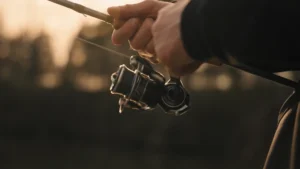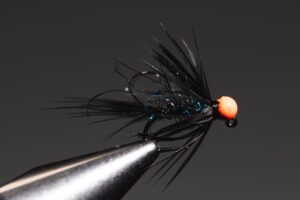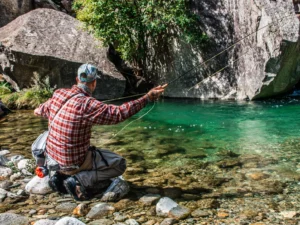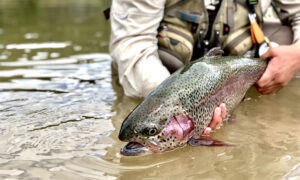Stillwater trout fishing—targeting trout in lakes, ponds, and reservoirs—is a unique and rewarding challenge. Unlike rivers and streams where current dictates fish positioning, stillwater environments require a different skill set: understanding depth, structure, temperature, and trout behavior across seasons. Whether you’re casting from shore, paddling a float tube, or drifting in a boat, mastering stillwater tactics will help you consistently hook into rainbows, browns, and cutthroats.
Understand Trout Behavior in Stillwater
In stillwater, trout behavior is largely dictated by three factors: water temperature, oxygen levels, and food availability. Trout prefer cool, oxygen-rich water, typically between 50–65°F. As these conditions change throughout the year, trout adjust their depth and location.
- Spring & Fall: Trout often cruise the shallows in search of food like insects and baitfish. These are peak times to fish from the bank or a float tube.
- Summer: As surface temps rise, trout retreat to deeper, cooler layers. Vertical presentation becomes more effective.
- Winter: Trout are sluggish but still feed. Look for mid-depth zones where temperatures are stable.
Key Areas to Target
- Drop-offs and Ledges: Transition zones from shallow to deep water are trout highways.
- Weed Beds: Provide food and cover; fish along the edges.
- Points and Humps: Underwater structure concentrates bait and draws predatory trout.
- Inlets and Outlets: These areas bring oxygenated water and attract feeding fish, especially in warmer months.
Effective Stillwater Presentations
1. Fly Fishing
Stillwater fly fishing is all about mimicking aquatic insects and movement.
- Floating Line: Use for chironomids, damsel nymphs, and dry flies in the shallows.
- Intermediate/Sinking Line: Great for reaching cruising fish or covering water.
- Popular Patterns: Chironomids, woolly buggers, leeches, damselfly nymphs, balanced flies.
Pro Tip: Use an indicator rig with suspended chironomids in spring and early summer—this deadly slow presentation is a stillwater favorite.
2. Spin Fishing
Spinning gear is versatile and deadly when matched to trout preferences.
- Small Spoons and Spinners: Kastmasters, Panther Martins, and Rooster Tails work well for covering water quickly.
- Soft Plastics: Trout magnets or small swimbaits mimic baitfish and are effective in clear water.
- Suspended Baits: Use PowerBait, salmon eggs, or worms on a slip bobber or Carolina rig.
Pro Tip: In deeper lakes, vertical jigging with a spoon or bait under a boat can be highly productive, especially during hot summer months.
3. Trolling
Trolling covers lots of water and keeps your presentation in the strike zone longer.
- Flat-line Trolling: Great in early season when trout are shallow.
- Lead Core or Downriggers: Required in summer to reach depths where trout hold.
- Lures: Rapalas, Needlefish, Thomas Buoyants, or trolling flies are top producers.
Pro Tip: Troll S-curves and vary your speed often—trout often strike during a change in motion.
Seasonal Adjustments
- Spring: Focus on shallow flats, especially near inlets and warming bays. Slow presentations excel.
- Summer: Go deep. Use sinking lines or downriggers and fish early morning or late evening.
- Fall: Similar to spring, trout move shallow to feed before winter. It’s prime time for aggressive bites.
- Winter: Fish slower and deeper. Use subtle baits or flies and focus on stable weather days.
Final Thoughts
Stillwater trout fishing requires patience, observation, and adaptability. The best anglers read the lake like a puzzle—figuring out where the trout are, what they’re eating, and how to present it effectively. With the right tactics, gear, and a little timing, you’ll turn quiet lakes into consistent trout producers.
Tight lines and calm waters!








